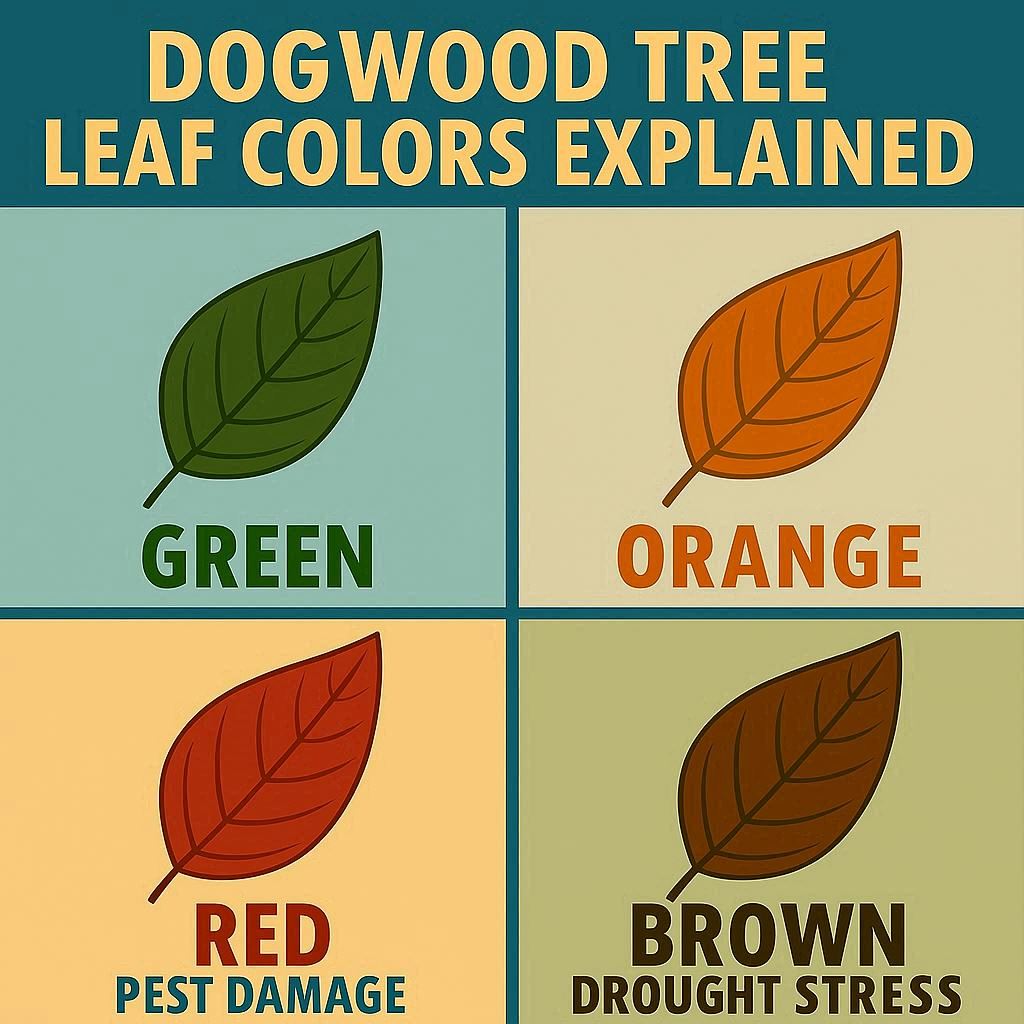
Dogwood trees are celebrated for their striking foliage that transforms dramatically throughout the seasons. Their leaves exhibit a range of colors, each influenced by unique biological and environmental factors. This detailed article explores the various hues dogwood leaves display—green, red, purple, orange, yellow, and brown—with explanations on why these changes occur. Each color reflects a different stage in the tree’s lifecycle or a response to its surroundings.
🌿 How To Identify Dogwood Tree Leaves
The Dogwood tree (Cornus species) is a beloved ornamental and wild tree known for its striking flowers, colorful foliage, and smooth, elegant leaves. Learning how to identify Dogwood leaves through the seasons helps you recognize the tree even when it’s not in bloom. Here’s what to look for during spring, summer, and fall.

🌸 Spring Appearance
In spring, Dogwood leaves begin to emerge shortly after the flowers bloom. The new leaves are light green, oval-shaped, and opposite on the twig — meaning they grow in pairs across from each other. Each leaf typically measures 3 to 6 inches long with a smooth edge and pointed tip.
A key identifying feature is the prominent curving veins that run parallel to the leaf edge, a hallmark of Dogwood species. When gently pulled apart, the leaf’s fine veins often form stringy fibers, another classic sign of a Dogwood. The young leaves have a soft, slightly fuzzy texture and may appear somewhat translucent when backlit by sunlight. Combined with the tree’s white or pink blossoms, these tender green leaves give Dogwoods their signature spring charm.
☀️ Summer Appearance
By summer, Dogwood leaves mature into a deeper medium to dark green with a smooth, glossy surface. The leaves are still arranged oppositely, maintaining the same oval shape and curved venation. The underside is often lighter in color, sometimes with a faint bluish tint.
In dense shade, Dogwood leaves may appear thinner and softer, while those in full sun become thicker and slightly tougher. During this season, the leaves provide a lush canopy that supports small fruits (drupes) forming by midsummer. Their distinct arched veins and symmetrical layout make them easy to identify compared to other trees with alternating leaf patterns.
🍁 Fall Appearance
In autumn, Dogwood trees put on a spectacular display as their leaves turn from green to vibrant shades of crimson, burgundy, purple, and orange. The exact color depends on species, sunlight exposure, and soil conditions. The transformation is gradual — starting at the leaf edges and moving inward.
Fallen Dogwood leaves retain their signature oval shape with curved veins, making them easy to spot even on the ground. By late fall, the tree may also display clusters of bright red berries, which contrast beautifully against the deep-colored leaves. This striking autumn palette is one of the reasons Dogwoods are so popular in landscaping and ornamental gardening.
✅ Quick Identification Tips:
- Leaf arrangement: Opposite pairs (a key Dogwood trait).
- Shape: Oval with smooth edges and pointed tips.
- Veins: Prominent, curving toward the leaf edges.
- Seasonal colors: Light green (spring), deep green (summer), red/purple (fall).
Green Leaves: The Foundation of Growth
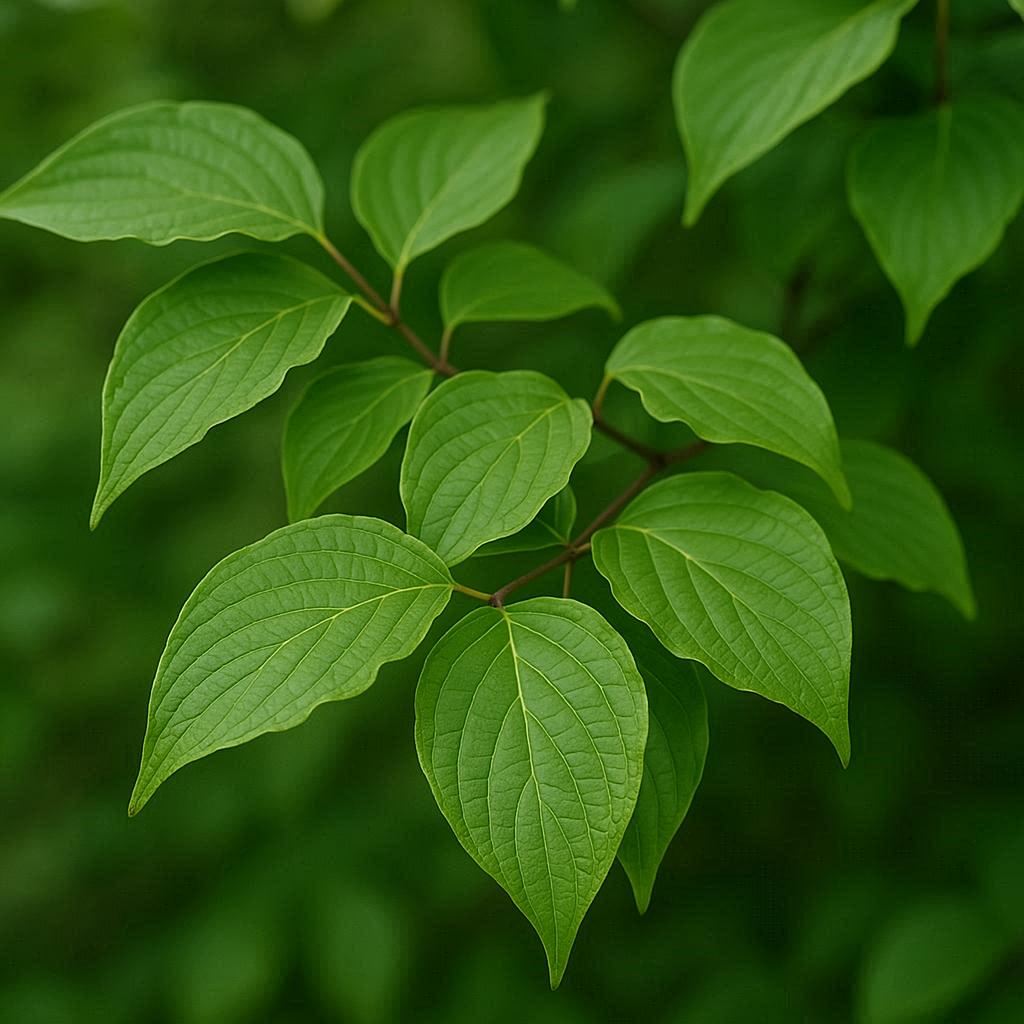
Green is the default color of dogwood leaves during spring and summer when chlorophyll is abundant. Chlorophyll is the pigment responsible for photosynthesis, the process by which the tree converts sunlight, carbon dioxide, and water into energy. This vibrant green color signals a healthy tree actively producing food and growing.
The amount of chlorophyll in the leaves determines the depth of green. In optimal conditions—ample sunlight, proper watering, and good soil nutrients—dogwood leaves glow with a rich green hue. The healthy green leaves enable the tree to prepare energy reserves for later stages of growth and seasonal changes.
Environmental factors such as light intensity and duration influence chlorophyll production. Leaves exposed to full sun tend to be a deeper green, whereas shaded leaves may appear lighter. The green phase also includes the unique venation of dogwood leaves, where veins curve gracefully along the leaf, facilitating nutrient and water transport.
Therefore, green leaves represent the dogwood’s peak health and vitality, preparing for the forthcoming transformation as seasons shift.
Red Leaves: The Autumn’s Fiery Display
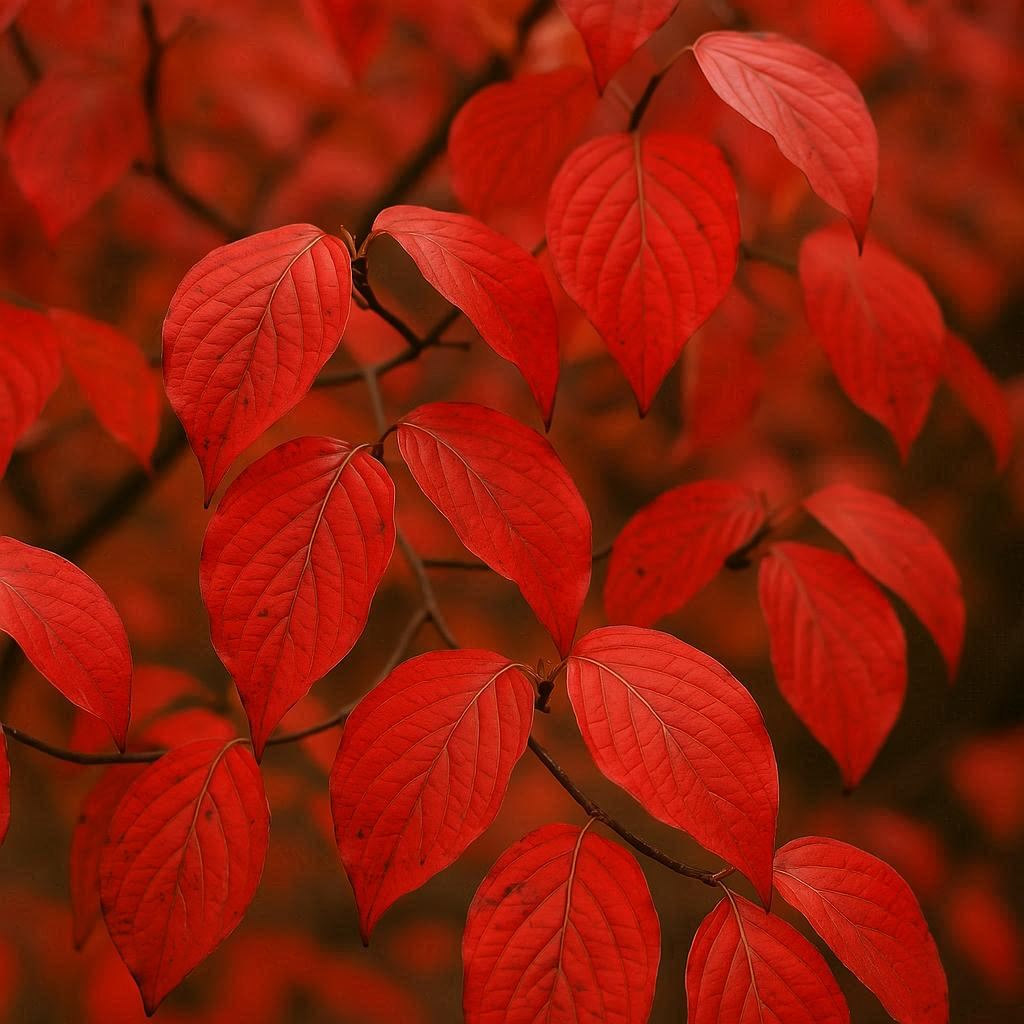
Red hues are among the most iconic of dogwood leaf color changes, seen predominantly during the fall. This red coloration primarily results from the accumulation of anthocyanins—water-soluble pigments that reflect red and purple light.
Anthocyanins serve multiple functions. They protect the leaves from damage caused by excess sunlight while the tree reabsorbs nutrients before leaf drop. These pigments act as a sunscreen, reducing oxidative stress and prolonging the lifespan of leaves during the senescence period.
The intensity of red coloration is influenced by environmental factors like sunny days and cool nights typical of autumn. These conditions promote anthocyanin synthesis. Dogwood species such as the Flowering Dogwood (Cornus florida) and Kousa Dogwood (Cornus kousa) commonly display vivid reds and crimsons.
Stress can prematurely trigger red coloration. Factors like drought, nutrient deficiency, or root injury cause some leaves to develop red pigments earlier, signaling a physiological response rather than a seasonal one.
Thus, red leaves symbolize both a beautiful stage of nutrient recycling and a potential indicator of environmental challenges.
Purple Leaves: A Shade of Protection
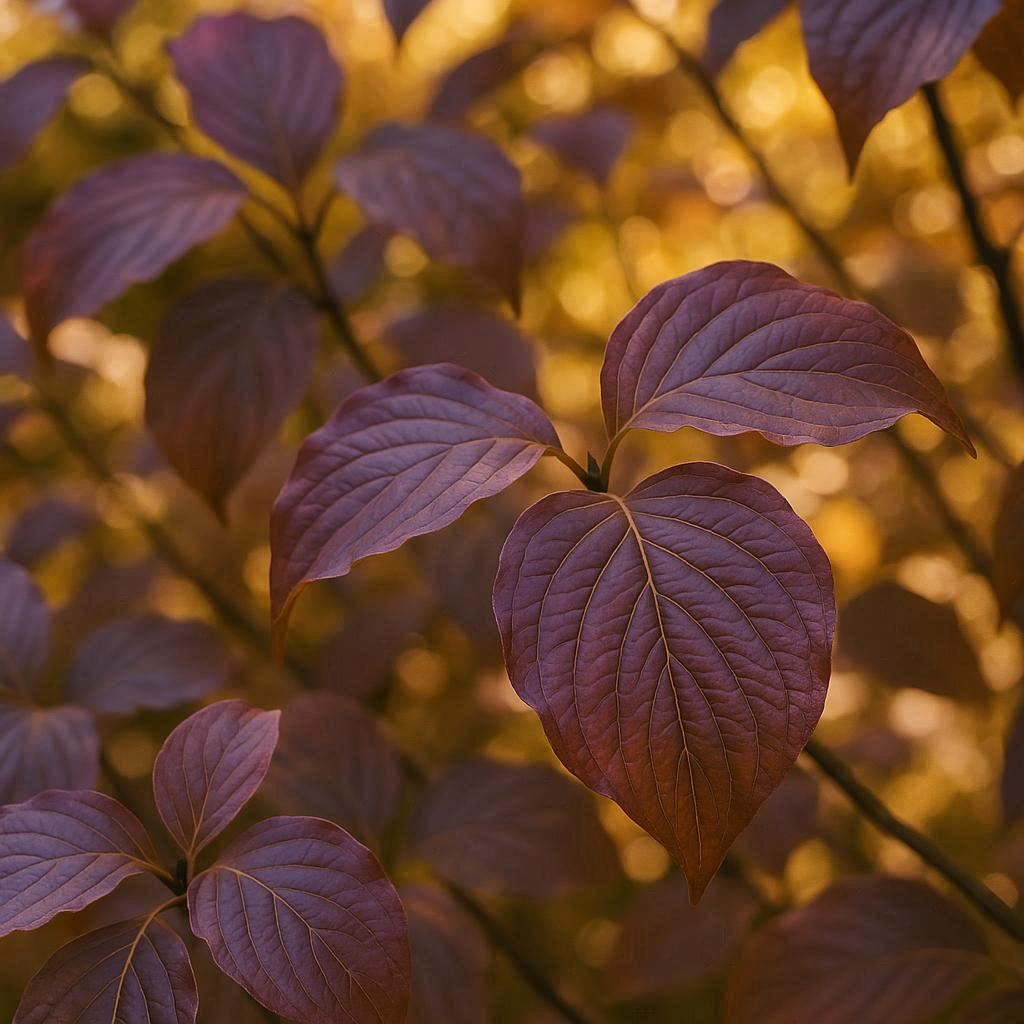
Purple dogwood leaf coloration is a deeper, often richer shade derived from high concentrations of anthocyanins interacting with other pigments. Sometimes purple hues are subtle, found in specific cultivars or emerging under particular environmental conditions.
The production of purple pigments offers similar protective benefits as red pigments, shielding cells from ultraviolet light and preventing damage during nutrient reabsorption. Purple colors are often noted in shaded or partly shaded leaves where balancing light absorption and protection is critical.
Certain hybrids and cultivars display enhanced purples in their leaves, especially as fall progresses. The molecular composition of anthocyanins and their interaction with pH levels within leaf tissues influence the visible shade—from bright reds to deep purples.
Like reds, purples may also appear due to stress factors, including pathogen infections or drought stress, and may precede leaf drop.
Purple leaves enrich the dogwood’s autumn palette and signify complex biochemical processes at work to preserve leaf functionality amidst changing conditions.
Orange Leaves: Transition and Vitality
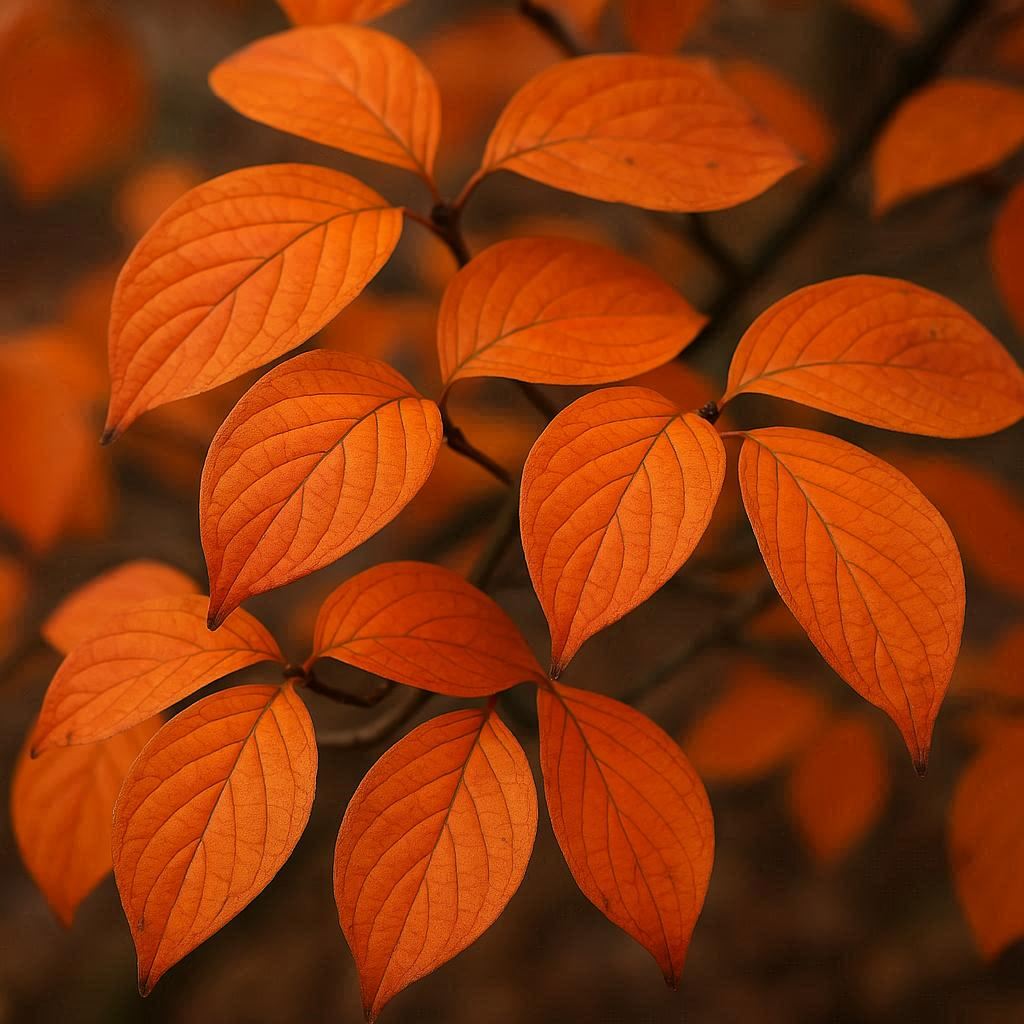
Orange hues in dogwood leaves arise mainly from carotenoids, pigments that are present throughout the growing season but masked by dominant green chlorophyll. As chlorophyll degrades during the fall, carotenoids reveal their true colors, illuminating leaves with warm oranges and golds.
Carotenoids play critical roles in photosynthesis by aiding light absorption and protecting leaf tissues from photooxidative damage. They help maintain cellular integrity during senescence.
Orange leaves may also emerge during transitional phases where chlorophyll is breaking down but anthocyanin production has not yet peaked. This intermediary period showcases the complexity of pigment changes.
Environmental factors such as soil moisture, temperature fluctuation, and sunlight influence the vibrancy of orange hues. Healthy dogwoods with balanced moisture often yield bright, sustained orange coloration.
This orange phase enriches the fall color spectrum and reflects ongoing metabolic activity in the aging leaves.
Yellow Leaves: The Unveiling of Hidden Pigments
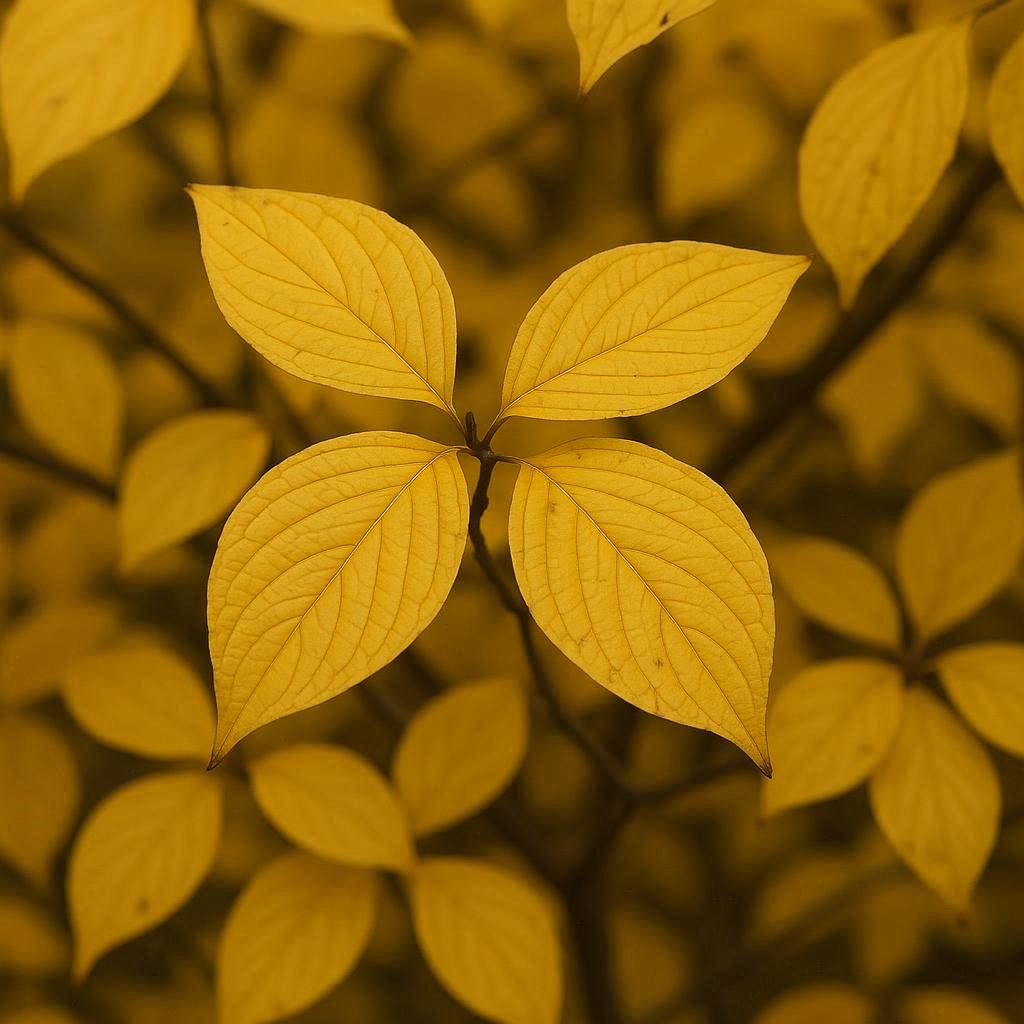
Yellow coloration in dogwood leaves primarily results from carotenoid pigments unmasked as chlorophyll fades. Sometimes, yellow may indicate stress or nutrient imbalances, especially involving nitrogen, which accelerates chlorophyll degradation.
During autumn, yellow leaves remind us of this natural unmasking process, revealing pigments that constantly support photosynthesis but are overshadowed by chlorophyll.
In dogwoods, yellow may appear less frequently or vividly compared to red or purple but serves as a critical color signaling the final stages of leaf life. Yellow leaves might also be symptomatic of diseases, such as leaf spot or water stress, hence observing associated symptoms is essential.
Proper watering and fertilization help maintain the balance between healthy yellowing and premature chlorosis.
Brown Leaves: End of the Cycle and Stress Signals
Brown leaves generally represent the end of a leaf’s life but can also signal stress or disease. As chlorophyll and other pigments degrade, tannins and dead cells give leaves their brown appearance.
Brown leaves in fall are expected as trees prepare for winter dormancy. However, premature browning can be triggered by drought, disease (like anthracnose or powdery mildew), sunscald, or pest damages.
These brown patches often start at leaf edges or spots and expand over time. Brown leaves lose photosynthetic capacity and are typically shed early.
Prompt identification of browning causes allows preventive measures such as improving watering practices, pruning affected branches, or applying fungicides.
In summary, brown leaves close the lifecycle of dogwood foliage but warrant attention if noticed out of seasonal context.
Table: Dogwood Leaf Color Changes & Causes
| Color/Pattern | Season/Trigger | Cause |
|---|---|---|
| Green | Spring/Summer | High chlorophyll for growth/photosynthesis |
| Red/Purple/Burgundy | Autumn (natural) | Breakdown of chlorophyll, anthocyanin buildup |
| Orange/Yellow | Autumn (natural) | Carotenoid pigments revealed |
| Early Red/Purple | Summer/early fall (stress) | Drought, root injury, site or bark disease |
| Brown Borders/Spots | Any, especially summer/fall | Fungal leaf spots or anthracnose |
| Premature Yellow | Late summer/fall | Nutritional stress, pests, root issues |
🌤️ Factors Affecting Dogwood Leaf Color Intensity
Dogwood trees are admired for their stunning seasonal leaf changes — from spring’s soft greens to fall’s vivid reds and purples. However, the intensity and vibrancy of these colors depend on several natural and environmental factors. Understanding them can help you maintain a Dogwood that’s both healthy and visually striking.
☀️ 1. Sunlight Exposure
- Effect: Sunlight is the most influential factor in leaf coloration.
- Details:
- Dogwoods growing in partial sunlight or filtered shade typically develop deeper, richer reds and purples in fall.
- Too much shade may result in duller, yellowish-green leaves with limited autumn color.
- Excessive direct sunlight, especially in hot climates, can scorch leaf edges or cause premature browning.
- Tip: Plant Dogwoods where they receive morning sun and afternoon shade for the best balance of health and color vibrancy.
🌡️ 2. Temperature Fluctuations
- Effect: Cool nights and warm, sunny days in early fall enhance pigment development.
- Details:
- Cool nights (below 55°F / 13°C) slow down chlorophyll breakdown, allowing anthocyanin pigments to dominate.
- Sudden frosts or heatwaves can stress the leaves and cause early drop, reducing color intensity.
- Tip: Trees in regions with gradual autumn transitions show the most brilliant crimson and burgundy hues.
💧 3. Soil Moisture
- Effect: Moisture balance directly affects both leaf health and coloration.
- Details:
- Dogwoods prefer consistently moist, well-drained soil.
- Drought stress leads to premature leaf drop or brown edges.
- Overwatering can suffocate roots and dull leaf colors.
- Tip: Keep the soil evenly damp (not soggy) using mulch to conserve moisture and maintain root health.
🌱 4. Soil Quality and pH
- Effect: Nutrient availability affects chlorophyll levels and overall leaf tone.
- Details:
- Dogwoods thrive in slightly acidic soil (pH 5.5–6.5).
- Nutrient-poor or compacted soil can make leaves appear pale or yellowish.
- Iron and magnesium deficiencies can also cause chlorosis (yellowing between veins).
- Tip: Enrich soil with organic compost and avoid alkaline conditions to promote vibrant, healthy foliage.
🌬️ 5. Weather Stress and Pollution
- Effect: Environmental stressors can dull or distort leaf colors.
- Details:
- Strong winds, urban air pollution, or acid rain can damage the delicate leaf tissue.
- Prolonged stress often causes muted fall colors or brown, crispy patches.
- Tip: Plant Dogwoods in sheltered areas away from strong winds and ensure clean, healthy soil conditions.
🌳 6. Tree Health and Age
- Effect: A Dogwood’s health and maturity influence color vibrancy.
- Details:
- Young trees often have brighter greens and faster color shifts.
- Mature trees, if well-nourished, develop the richest fall reds and purples.
- Trees weakened by pests (like dogwood borers) or fungal infections tend to have faded or patchy color.
- Tip: Regular pruning, watering, and disease management help maintain color consistency year after year.
🍁How to Enhance Dogwood Leaf Color Naturally
| Factor | Best Condition for Vibrant Color |
|---|---|
| Sunlight | Partial sun to light shade |
| Temperature | Warm days, cool nights |
| Soil Moisture | Evenly moist, well-drained |
| Soil pH | Slightly acidic (5.5–6.5) |
| Weather Protection | Shelter from wind and pollution |
| Tree Health | Regular care, pruning, and pest control |
Conclusion
Dogwood tree leaf colors are a beautiful and complex result of pigment dynamics, environmental influences, and tree physiology. From vibrant spring greens through fiery reds and purples, warm oranges, bright yellows to fading browns, each shade tells a story about the health and seasonal rhythms of the tree. Understanding these colors enhances appreciation and guides proper tree care to maintain this iconic foliage spectacle year after year.
References
